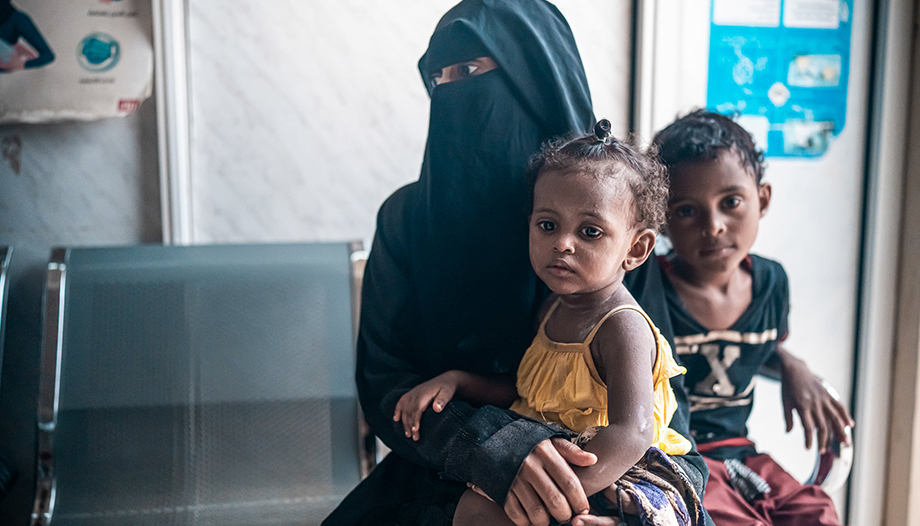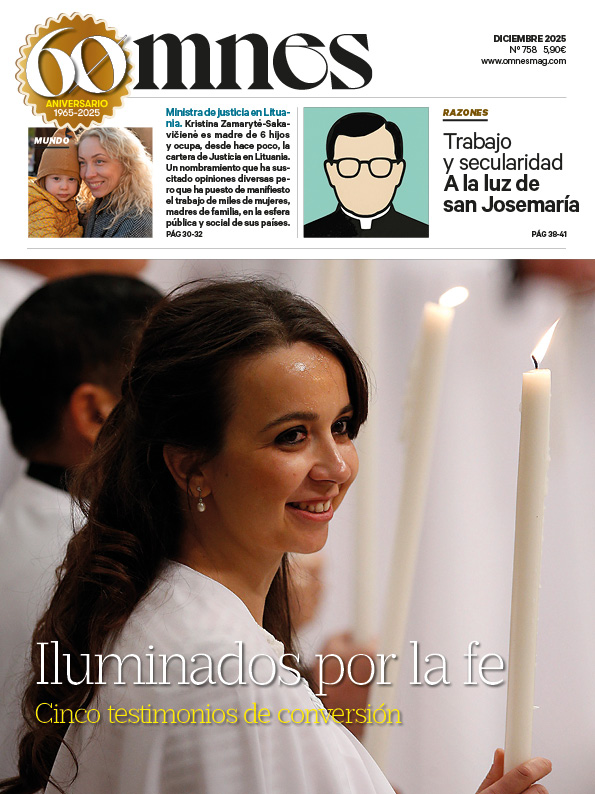We have already outlined, in an article on Iran, the main characteristics of Shiite Islam as compared to Sunni Islam.
In Yemen, Shiite Islam is mainly represented by the Zaydi sect and, to a lesser extent, by other currents such as the Duodecimans (the majority in the rest of the Shiite Islamic world, for example in Iran).
The zayditas They take their name from Zayd ibn Ali, great-grandson of Ali, who was the fourth "rashid" caliph after the death of Muhammad and was also the first Shiite imam. For the Zaydis, there are only five legitimate imams, descendants of Ali and Fatima, daughter of the Prophet Muhammad.
They differ from the Duodeciman Shiites (Imamites) in that they do not believe in the occultation of the last Imam, a central feature of the Duodeciman faith. The theology and jurisprudence of the Zaydites, therefore, are closer to those of the Sunnis, to the point that they are often considered a kind of bridge between Sunnism and Shi'ism.
The Zaydis arrived in Yemen in the ninth century, especially in the northwest, where they established an imamate in Sa'ada. As we have seen in the previous article, the Zaydi imams managed over time to rule much of northern Yemen, gradually consolidating their power, to the point that the Zaydi imamate was able to last for almost a millennium, that is, until the 1962 revolution that led to the creation of the Yemen Arab Republic and put an end to their political domination.
As of today, it can be said that the best known representatives of the Zaydi Islamic current in Yemen (to which an estimated 45% of the population belongs) are the Huthi rebels, i.e. the movement (which later became an armed group) that took its name from Hussein Badreddin al-Huthi (1959-2004), considered one of the greatest spiritual, political and religious leaders by the Yemeni Zaydis, after his assassination,
In fact, Yemeni Zaydis, especially after the reunification of the country (1990), felt increasingly marginalized within the national political scene, also due to the growing Salafist and Wahhabi influence coming from Saudi Arabia.
The Arab Springs and the ensuing unrest in the country were thus an opportunity for the armed Houthi movement to rise to international prominence by capturing the capital, Sana'a, in 2014 and triggering an armed conflict against the internationally recognized government and the Saudi-led coalition that intervened in support of it.
The Houthis, for their part, have received logistical and moral support from Iran, although relations between them and the Tehran regime are by no means straightforward (we have seen that the Houthis are Zaydis while the Iranian regime is Duodeciman).
Alongside the Zaydi majority, there is also, to a much lesser extent (both numerically and in terms of political influence), a Shi'a community among Yemen's Shi'ites. duodecimana or imamita, whose followers believe in a line of twelve imams (political and religious leaders who, in Shi'ism, are believed to belong to the immediate family of Muhammad and are especially beloved and inspired by God, even considered by some to be infallible and partakers of the divine nature), the last of whom, Muhammad al-Mahdi, is considered occult (not dead, but hidden and destined to return as Mahdi, or redeemer, a kind of Islamic messiah).
Although numerically less important, the duodecimanos However, they have a certain visibility in the country precisely because of the support provided by Iran, through the dissemination of religious literature and the construction of cultural centers, which the regime in Tehran uses to promote its doctrine.
Jews in Yemen
Yemen has always been, as we have seen, a crossroads of peoples, cultures and trade routes. It is precisely in this land where we find settled, for millennia, one of the oldest Jewish communities of the Diaspora, one of the proudest and most exotic, considered by many Western Jews as the living testimony of the traditions and the moral, spiritual, but also physical aspect of the people of Israel before its dispersion to the four corners of the world.
The origins of this community are uncertain and, to reconstruct its earliest history, there are more legends than actual sources.
These Jews always lived isolated from the rest of the Diaspora, until the exodus to Israel, apart from some sporadic commercial or religious ties, living scattered in small groups in the south of the Arab country, sometimes almost without contact with each other. The only large community was that of Sana'a, in whose district they were concentrated.
Community customs were characterized by strict adherence to traditions. Marriages, for example, were arranged by parents at an early age and people married as soon as they were teenagers; women were illiterate and dependent on men; bigamy was widespread, to the extent that even until recently in Israel, among the old immigrant families, there were some Yemenis with two wives.
The Judaism of this group was strictly rabbinical and their presence in the country was seen by them as a period of exile that would end with their return to the Promised Land.
For most Yemeni Muslims (especially the Zaydis), Jews were considered impure and were forbidden to live and mingle with the Islamic faithful, as well as being subjected to harassment and discrimination.
The Yemenite Israelites differed from the Muslims both in their outward appearance, especially in the way they dressed, and in other peculiarities, such as language. They spoke a different form of Arabic than the citizens of the Islamic faith, both in vocabulary (the Arabic spoken by the Israelites includes Hebrew and Aramaic words) and in accent.
From 1872, with the occupation of Sana'a by the Ottoman army, the living conditions of the Yemenite Jewish community, quite precarious and miserable, seemed to improve. However, from 1905, the year of the defeat of the Turks by the Zaydi Imams, the quality of life of the Israelites of the South Arab country deteriorated again.
Then, in 1918, at the end of World War I and with the dissolution of the Ottoman Empire, Turkish troops left Yemen for good, where the conditions of the Jewish community remained almost unchanged until 1949-50, the period of mass emigration to Israel.
It was in 1947, following the UN resolution on the partition of Palestine, that the pogrom was merely the culmination of a wave of persecution against local Jews. In response to this event, between 1949 and 1950, with the operation "Flying Carpet", also known as "On Eagle's Wings", the Israeli government organized a massive emigration of a large part of the community to the Jewish State, by means of an air bridge of some 400 flights, which took 49,000 Yemenite and Aden Jews out of the country, that is, almost the entire community.
In the following years, the already meager remaining Jewish community dwindled further, due to constant emigration and harassment, until the 2000s, when the situation worsened further with increasing threats from Islamic extremists and civil war. In fact, many of the remaining Jews were evacuated by international organizations.
In 2016, one of the last groups of Yemeni Jews was relocated to Israel. As of today, only a handful of Jews remain in Yemen, the last vestige of a millennia-old community, living in isolation and under constant threat.
It must be said that in Israel, Jews of Yemeni origin now represent an artistic and cultural elite (many singers, actors and artists are members of this community, despite difficult integration conditions in the past): the most famous internationally are the singers Noa and the late Ofra Haza.
Christianity in Yemen
Christianity has very ancient roots in Yemen, dating back to the 4th century A.D., even here, therefore, long before the birth of Islam. The Christian community settled in particular in the city of Najràn, which we mentioned in the previous article on the "Omarite martyrs" (Himyarites).
After the Islamic conquest in the 7th century, a slow decline began for Christianity, although some communities managed to survive for a few centuries. However, massive conversions to Islam, sometimes forced and sometimes voluntary (due to the difficult living conditions that those who professed Christianity had to endure) led to the almost total disappearance of the Christian faith in the country.
At present, there are only a few Christian communities in Yemen, mostly foreign workers and diplomatic personnel. The churches present are mainly Catholic and Protestant and serve, as is the case in other Islamic countries (we already talked about this in one of the articles on Morocco) mainly foreigners.
Even in Yemen, the Constitution states that Islam is the state religion and Sharia is the source of law. Religious freedom is guaranteed de jure, but de facto is very limited. In fact, apostasy, i.e. conversion from Islam to another religion, is considered a crime punishable by death under Islamic law. The construction of new churches is then almost impossible and missionary activities are strictly forbidden.
The situation of Yemeni Christian converts from Islam is very complicated. If they do not die, they continue to suffer severe persecution and often have to profess their faith in secret to avoid discrimination, violence and arrests.
Yemeni society, which is strongly conservative, tends to marginalize those who do not follow Islam, especially at a time like the present, when tensions and the ongoing conflict further worsen a situation that, for religious minorities, including Christians, was already extremely complicated.
Let us think, in fact, of a case that has caused international commotion, that of the Missionary Sisters of Charity (the order founded by Mother Teresa of Calcutta, present in Yemen for decades). In 2016, four nuns of this congregation were massacred by a commando of armed men who attacked their convent in Aden.
Along with them, several Ethiopian collaborators of the congregation, as well as elderly and sick people being cared for by the sisters at the time, also lost their lives, making a total of 16 dead. This tragic event highlighted once again the dangers to which Christian communities and humanitarian personnel are exposed in this wonderful country which, unfortunately, never finds peace.








